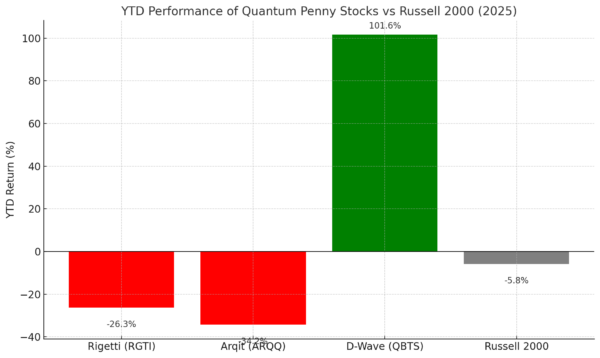Top 30 SaaS Stocks to Buy and Hold
As growing numbers of consumers are now adopting software-as-a-service (SaaS) products, the future looks promising for SaaS stocks. The concept of software-as-a-service has been around for more than 60 years. But it was the internet expansion of the 1990’s that allowed SaaS technology to take off at an alarming rate.
Today, there are plenty of businesses that start out as SaaS companies and provide access to their services 100% online. But that was not always the case. USBs, CD-ROMs and floppy disks are just some of the methods of manual installation that companies have used in the past. However, now there are much faster and more effective ways to access software. And the fact that those processes and updates are managed for you is a massive value add for consumers.
What is a SaaS Stock?
SaaS stocks or software-as-a-service stocks, represent ownership in companies that provide real-time access to online software. As stated earlier, the process of software distribution used to take much longer. In the past, users and businesses would purchase software by license and install it on their computers. Any data created was then stored on the user’s computer and was not backed up to the provider’s server.
This is not the case with SaaS. All updates occur at the server level and are handled by the SaaS company. This can be a huge relief for the end user, as you can now focus on all of the other areas of your life or job that need attention.
Depending on which SaaS product we are looking at, the actual process may vary. Many SaaS products do not require any installation at all. Others like Slack (NYSE: WORK), offer both a desktop app and a web browser version. This model has become increasingly more popular as it provides flexibility and increases adoption for the user.
Transitioning to Software-as-a-Service
Additionally, many SaaS stocks use a pay-as-you-go model. Adobe (NASDAQ: ADBE) is one notable example. In my ADBE Stock article, I highlighted Adobe’s transition from a licensed software company to a fully cloud-based company. “The reason this was so successful for Adobe was because of their careful attention towards consumers and shareholders. In fact, it was as early as 2011 that Adobe announced the intention to move towards SaaS (Software as a Service). Consequently, this news was met with hostility by many. But, Adobe’s methodical process allowed users and stakeholders to process the change over a six year period.”
Transitioning to SaaS over a six year period may seem long to the average reader. However, it is a necessary step to mitigate risk for many legacy companies. After all, even 10 or 15 years ago, software companies that did not provide a physical installation disk were considered risky.
Software on Demand
SaaS from a fundamental standpoint is “software on demand”. Granting end users access to software at anytime, from anywhere, and from a variety of web-enabled devices. One example of this is the widely popular video social networking service TikTok. As the fastest growing SaaS application, TikTok has been downloaded over three billion times. And while TikTok’s parent company Bytedance is a privately held company, many are hopeful to see Bytedance on an IPO Calendar one day soon.
Software-as-a-service is also fantastic from a scalability and company growth standpoint. Brands like Netflix, Spotify, and even Airbnb can up-sell customers at any point during their lifecycle. Tiered pricing and overall rate increases allow for massive revenue growth and increasingly higher share prices for SaaS stocks.
The Blurred Lines of SaaS Stocks
The lines of what constitutes a SaaS company are certainly blurred. Many of the stocks we talk about when referencing SaaS are not “purely” SaaS stocks. In fact, practically all businesses in operation today utilize SaaS at some level. Some analysts define SaaS stocks or SaaS companies as those with a majority of their revenue attributed to reoccurring cloud-based software payments. While the majority of the stocks we analyze fall under that criteria, there are some notable exceptions.
Since joining the “$1 trillion market cap club” in 2020, Amazon reported more than $100 billion in net sales for each quarter of 2021. And while their AWS (Amazon Web Services) products only account for 17.78% of total revenue, that number is still massive. Therefore, Amazon is a major player in the overall SaaS market. Microsoft and Google are also companies with relatively similar percentages of revenue in the SaaS market. Meanwhile, their cloud businesses are still growing. Also, because of how large those three companies are, they account for more than 58% of the cloud services market as a whole.
As demand grows, increasingly more IaaS (infrastructure as a service) and PaaS (platform as a service) companies are scaling their SaaS products. The SaaS market subscription-based pricing model continues to spur legacy companies to migrate their software solutions to a SaaS consumption model. In fact, many estimate the SaaS market revenue will greatly surpass IaaS and PaaS by 2022.
List of Top 30 SaaS Stocks to Buy in 2022
Amazon (NASDAQ: AMZN)
Slack (NYSE: WORK)
Adobe (NASDAQ:ADBE)
Salesforce (NYSE:CRM)
Netflix (NASDAQ: NFLX)
Spotify (NYSE: SPOT)
Intuit (NASDAQ: INTU)
DigitalOcean (NYSE: DOCN)
HubSpot (NYSE: HUBS)
DropBox (NASDAQ: DBX)
Alphabet (NASDAQ: GOOGL)
Uber (NYSE: UBER)
Adobe (NASDAQ: ADBE)
Shopify (NYSE: SHOP)
Workday (NASDAQ: WDAY)
ServiceNow (NYSE: NOW)
Zoom (NASDAQ: ZM)
Dynatrace (NYSE: DT)
Snowflake (NYSE: SNOW)
Airbnb (NASDAQ: ABNB)
Smartsheet (NYSE: SMAR)
Atlassian (NASDAQ: TEAM)
Twilio (NYSE: TWLO)
Mongodb (NASDAQ: MDB)
Zendesk (NYSE: ZEN)
Cloudflare (NYSE: NET)
Docusign (NASDAQ: DOCU)
Square (NYSE: SQ)
Microsoft (NASDAQ: MSFT)
Asana (NYSE: ASAN)
Interested in More SaaS Stocks?
The research team over at Profit Trends have had their eyes on several saas stocks that have seen tremendous growth in recent months.
Want more insight into profitable SaaS stocks? Sign up for our free Profit Trends e-letter today. You’ll get the latest updates on market trends, cybersecurity, tech stocks, energy trends and more. If it’s moving in the markets, you can bet the team at Profit Trends is covering it.






